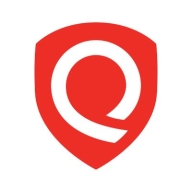

Microsoft Configuration Manager and Qualys Patch Management compete in the IT management and patch management categories. Qualys Patch Management seems to have the upper hand due to its user-friendly patch scheduling and risk-based prioritization.
Features: Microsoft Configuration Manager provides robust application pushing, operating system deployment with PXE, and WSUS integration for patching. Additionally, it offers extensive reporting capabilities, compliance data gathering, and efficient mobile management with the Intune Connector. Qualys Patch Management is valued for simplifying third-party application patching, offering flexible script execution, and automating patch scheduling with effective risk-based prioritization.
Room for Improvement: Microsoft Configuration Manager users desire improved performance with non-Microsoft product updates and enhanced automation and cloud capabilities. They also seek simpler troubleshooting and better remote support. Qualys Patch Management could enhance built-in driver updates, expand application support to include Oracle, and refine its user interface for greater clarity, alongside faster responses to vulnerabilities.
Ease of Deployment and Customer Service: Microsoft Configuration Manager is primarily on-premises, demanding skilled deployment due to its complexity, with mixed reviews on technical support and documentation. Qualys Patch Management focuses on cloud deployment with streamlined setup and generally positive customer service, although user training and response times are noted as areas for improvement.
Pricing and ROI: Microsoft Configuration Manager is tailored for larger enterprises, with costs justified by efficiencies in automation and network management. Qualys Patch Management offers competitive pricing but can seem expensive with added features. Still, it presents good value by managing large asset volumes effectively, emphasizing vulnerability management.
With Qualys, we can save around 70 percent of time and between 30 to 40 percent of money.
We have a 50 percent return on investment due to reduced operational complexity and increased efficiency in patching and detection.
We have achieved significant time savings of 90 percent, primarily due to comprehensive oversight and visibility of security issues.
Their response time and first-level support quality need improvement.
For technical support from Microsoft, I would rate them a nine.
The support team is experienced and responsive.
The support team is responsive and provides detailed information.
Whenever we raise a request and mention the priority of the ticket, they respond immediately via email or call.
The product is suitable for our size, handling 800 devices.
It scales efficiently across different machines globally, ensuring patches are deployed smoothly.
Qualys Patch Management is a globally scalable product, easily handling increasing workloads and users.
They introduce new modules as needed, making Patch Management highly scalable.
There were misconfigurations by our team rather than issues with the product itself.
I would rate the stability of Qualys Patch Management nine point five out of ten.
The stability of Qualys Patch Management is impeccable.
Overall, it is reliable.
A better command line interface for Microsoft Configuration Manager would be an additional feature I would to see in the future to make it closer to a perfect score.
I can suggest that Microsoft Configuration Manager should get the Autopilot feature because Autopilot is the main part of Intune, and nowadays everybody is using Autopilot.
There is a limitation where Qualys may not always offer solutions for remediation, particularly for end-of-life or end-of-service applications.
It would be better if Qualys Patch Management identifies whether the process has failed at the first instance and provides a retry button or retry mechanism, allowing retries for failed patches.
For critical options, they could make them red, green for medium, and blue for less significant options.
The setup cost is considered sufficient.
The pricing for Microsoft Configuration Manager is okay for me.
We get many more features at the same price as other solutions such as Microsoft SCCM.
The pricing is reasonable and less expensive than the previous tool.
Qualys Patch Management is expensive.
If I want to get a fetch report for anything, such as hardware-related issues or group policy-related issues, I need to fetch the report by using SCCM's scripting language and remediation part.
The most valuable features I find in Microsoft Configuration Manager are mostly patching, deploying software, deploying images, and running custom scripts.
The product valuable for deployment recovery.
We leverage this functionality to deploy scripts that adjust registry values, effectively patching vulnerabilities and enhancing the security of our machines.
We have been able to apply workarounds for zero-day vulnerabilities efficiently.
It provides insight into the organization's security posture and keeps databases updated with new CVEs.
| Product | Market Share (%) |
|---|---|
| Microsoft Configuration Manager | 11.0% |
| Qualys Patch Management | 4.1% |
| Other | 84.9% |


| Company Size | Count |
|---|---|
| Small Business | 20 |
| Midsize Enterprise | 13 |
| Large Enterprise | 64 |
| Company Size | Count |
|---|---|
| Small Business | 10 |
| Midsize Enterprise | 5 |
| Large Enterprise | 19 |
Microsoft Configuration Manager streamlines IT management with features such as software deployment, patch management, and automation, centralizing operations for Windows environments. Integration with Microsoft products allows efficient oversight of workstations and servers.
Microsoft Configuration Manager provides comprehensive IT management, offering software deployment, patch management, and application pushing. Automation reduces manual tasks, ensuring consistency across systems. Centralized management enables standardized OS deployments, application updates, and configuration integrity. Integration with Microsoft products facilitates seamless operations, while hardware and software inventory, compliance reporting, and remote control functions enhance IT management. Users seek improvements in application deployment for those without deep scripting knowledge and desire better WSUS control, PowerShell and Intune integration, Linux compatibility, and user interface enhancements. Performance improvements are requested for remote user management and third-party application support.
What features enhance Microsoft Configuration Manager?Microsoft Configuration Manager is widely implemented in organizations to manage Windows workstations and servers. It is essential for deploying operating systems and applications, managing software updates, and conducting hardware and software inventories. The tool is crucial for endpoint and configuration management, ensuring compliance, and automating processes like patching and vulnerability management. Industries such as finance, healthcare, and education rely on Microsoft Configuration Manager to keep systems secure and operational, adapting it to address their specific needs and challenges in maintaining diversified IT environments.
Qualys Patch Management optimizes patching and vulnerability remediation through automation and intelligence insights, accelerating the process by 43% and improving patch rates by 90%. Its integration with CMDB and ITSM tools speeds up ticket closures by 60%, effectively reducing the attack surface while freeing IT and security resources. This cloud-based solution bridges the IT-security gap, making it essential for cybersecurity.
We monitor all Patch Management reviews to prevent fraudulent reviews and keep review quality high. We do not post reviews by company employees or direct competitors. We validate each review for authenticity via cross-reference with LinkedIn, and personal follow-up with the reviewer when necessary.